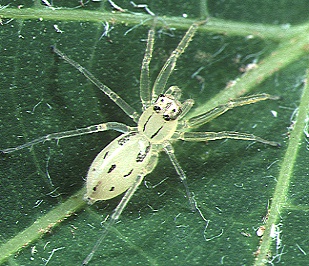
Icius is a genus of jumping spiders described by Eugène Simon in 1876, belonging to the Order Araneae, Family Salticidae.

Onomastus is a genus of Asian jumping spiders that was first described by Eugène Louis Simon in 1900. It is the only genus in the subfamily Onomastinae.

Stenaelurillus is a genus of jumping spiders that was first described by Eugène Louis Simon in 1886. Most species live in Africa, with some species found in Asia, including China. All species have two white longitudinal stripes on the carapace, and both sexes show strong bristles around the eyes. The name is a combination of the Greek sten- "narrow" and the salticid genus Aelurillus.
Cephalosilurus is a small genus of catfishes of the family Pseudopimelodidae.
The black-tailed gerbil is a species of rodent found in Ethiopia, Kenya, Somalia, and Tanzania. Its natural habitats are dry savanna, subtropical or tropical dry shrubland, and arable land.
Onomastus of Smyrna was the first Olympic victor in boxing at the 23rd Olympiad, 688 BC, when this sport was added. According to Philostratus, Pausanias and Eusebius, Onomastus was not only the first Olympic boxing champion but he wrote the rules of Ancient Greek boxing as well. Pausanias adds that Smyrna was already then part of Ionia..
Nigricauda, a Latin word meaning black-tailed, may refer to:
Rattota is a town in Sri Lanka, located within Matale District, Central Province. The population of the town, according to the 2012 census, was 1,761.
Axoclinus nigricaudus, known commonly as the Cortez triplefin, is a species of triplefin blenny. It occurs in the eastern Pacific in the western and north-eastern Gulf of California.

Gerbilliscus is a genus of rodent in the subfamily Gerbillinae (gerbils) of the family Muridae. It contains the following species, all native to Africa:
Onomastus quinquenotatus is a species of spider of the genus Onomastus. It is endemic to Sri Lanka.
Onomastus rattotensis is a species of spider of the genus Onomastus. It is endemic to Sri Lanka. The species was first discovered from Rattota area of Matale District, hence the specific name.

Asemonea flava is a species of jumping spider in the genus Asemonea that is endemic to Kenya. The spider was first defined in 2001 by Wanda Wesołowska, one of over 500 that the arachnologist described during her career. The spider is small, with a yellow carapace and abdomen each typically 2.2 mm (0.087 in) long, although the abdomen is narrower and lighter. The female has spines on its palpal tibia and a distinctive epigyne that with a complex internal structure with helical receptacles. The male has not been described.

Icius nigricaudus is a species of jumping spider in the genus Icius that lives in South Africa. It was first described in 2009 by Wanda Wesołowska and Charles Haddad. The spider is small, with a carapace measuring between 1.3 and 1.4 mm long and an abdomen that is between 1.2 and 1.3 mm in length. The carapace is brown with a white stripe down the middle. The male has a distinctive pedipalp with a tegulum with a low posterior node, a straight embolus, and hooked ibial apophysis, or appendage. The female has a simple epigyne with long and narrow seminal ducts.
Onomastus corbetensis, is a species of spider of the genus Onomastus. It is endemic to Sri Lanka.
Onomastus jamestaylori, is a species of spider of the genus Onomastus. It is endemic to Sri Lanka.
Onomastus maskeliya, is a species of spider of the genus Onomastus. It is endemic to Sri Lanka. Onomastus maskeliya inhabits high altitude cloud forests, as a result, its distribution is limited.

Stenaelurillus senegalensis is a species of jumping spider in the genus Stenaelurillus that lives in Senegal. Named after the country where it was first found, it was first described in 2018 by Dmitri Logunov and Galina Azarkina. The spider is small, with a carapace between 1.7 and 2.5 mm long and abdomen between 1.6 and 3.45 mm long, although the female is larger than the male. The carapace is hairy, brown and has two white stripes. The abdomen differs between the male and female. The male has a pattern of yellow spots and a brown stripe. The female has a cross of yellow stripe and two brown stripes. The male has a bulging palpal bulb while the female has a flat epigyne with widely separated and backward-facing copulatory openings. It is similar to Stenaelurillus nigricaudus, also found in the country, but can be distinguished by the design of its long straight embolus and the lack of pockets in the epigyne.

Stenaelurillus nigricaudus, synonyms Aelurillus sahariensis and Stenaelurillus nigritarsis, is the type species of the genus Stenaelurillus. It is a jumping spider that lives in Algeria, Burkina Faso, Gambia, Mali, Niger and Senegal. The male was first described by Eugène Simon in 1886 and the female initially in 1936 by Ludovico di Caporiacco and more thoroughly by Nikolaj Scharff and Tamás Szűts in 2005. It is a medium-sized spider with a cephalothorax between 2.4 and 2.7 mm and an abdomen that is between 2 and 3.7 in long. The carapace is reddish-brown and has two white or yellow stripes. The female abdomen has a pattern of stripes and spots, with some examples having brown spots inside yellow spots. The male abdomen has either a single dark stripe or two white and one brown stripes. While the female pedipalps are yellow, the male has either dark or brown pedipalps. The female has distinctive flanges at its copulatory openings. The male is distinguished by the shape of its palpal bulb and, particularly, of its hook-shaped embolus.







